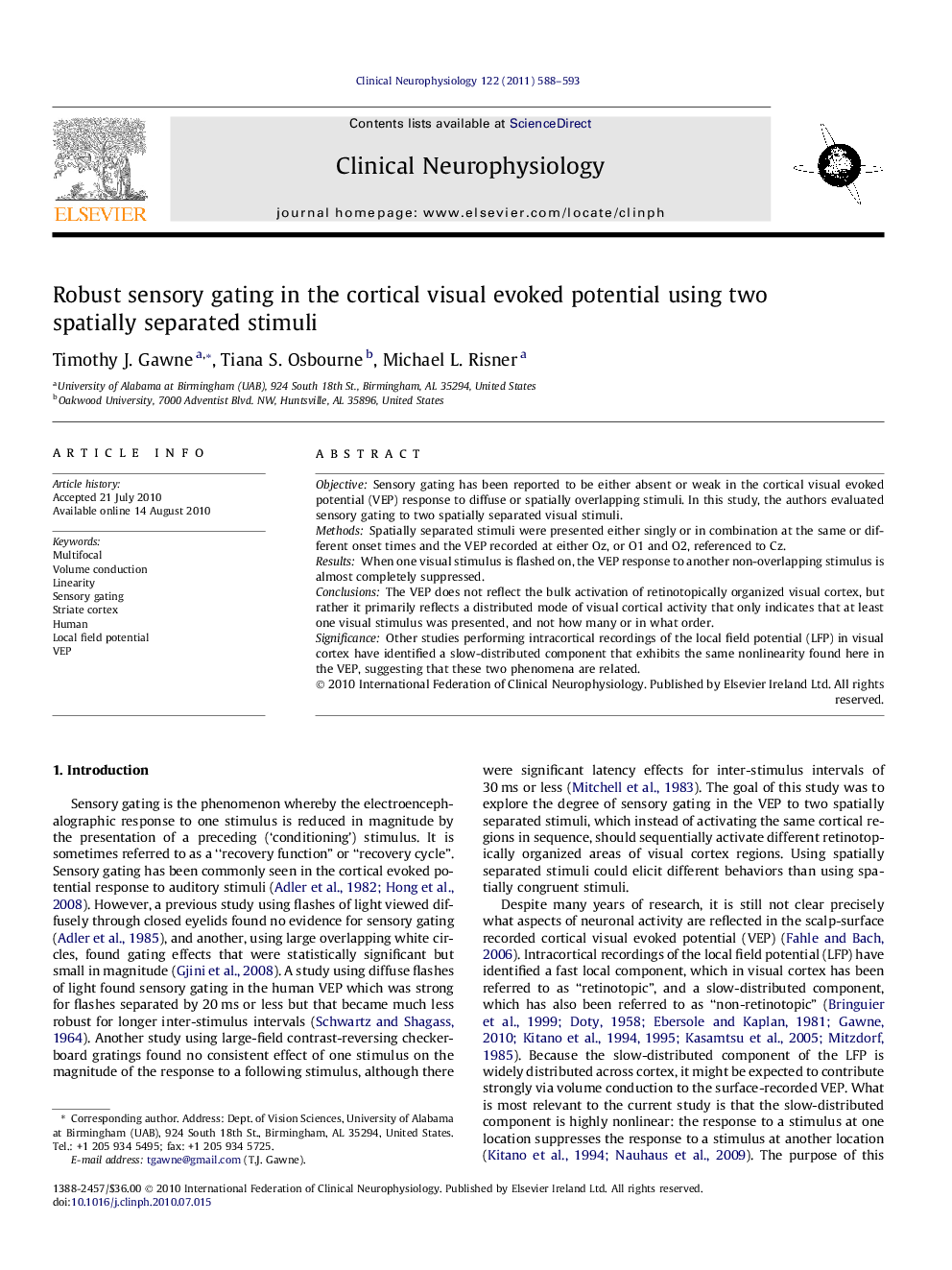| Article ID | Journal | Published Year | Pages | File Type |
|---|---|---|---|---|
| 6008734 | Clinical Neurophysiology | 2011 | 6 Pages |
ObjectiveSensory gating has been reported to be either absent or weak in the cortical visual evoked potential (VEP) response to diffuse or spatially overlapping stimuli. In this study, the authors evaluated sensory gating to two spatially separated visual stimuli.MethodsSpatially separated stimuli were presented either singly or in combination at the same or different onset times and the VEP recorded at either Oz, or O1 and O2, referenced to Cz.ResultsWhen one visual stimulus is flashed on, the VEP response to another non-overlapping stimulus is almost completely suppressed.ConclusionsThe VEP does not reflect the bulk activation of retinotopically organized visual cortex, but rather it primarily reflects a distributed mode of visual cortical activity that only indicates that at least one visual stimulus was presented, and not how many or in what order.SignificanceOther studies performing intracortical recordings of the local field potential (LFP) in visual cortex have identified a slow-distributed component that exhibits the same nonlinearity found here in the VEP, suggesting that these two phenomena are related.
